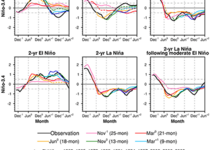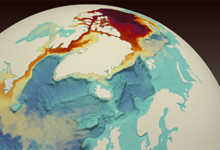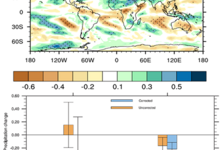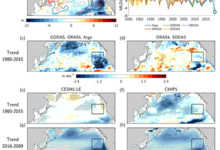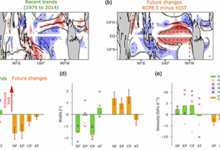Research Highlights
We aim to feature the latest research results from US scientists whose published paper features work that is sponsored by one or more sponsoring agency programs of US CLIVAR (NASA, NOAA, NSF, DOE, ONR). Check out the collection of research highlights below and sort by topic on the right. Interested in submitting an article for consideration? See our Research Highlight Submission Guidelines page for more information.
A new study by Wu and co-authors shows that the duration of individual ENSO events during 1954-2015 can be predicted up to two years in advance using a suite of multiyear retrospective forecasts conducted with the Community Earth System Model version 1, a climate model that well simulates the statistical and dynamical features of the temporal evolution of ENSO events.
The Beaufort Sea increased its freshwater content by 40% over the past two decades. How and where this water will flow into the Atlantic Ocean is important for local and global ocean conditions. Zhang and colleagues simulated ocean circulation and tracked the Beaufort Sea freshwater’s spread during a historical release episode from 1983 to 1995.
Climate models generally project wetter winters for the US Southwest under global warming. Dong et al. discovered a strong relationship between a common model bias with future precipitation changes over this region. More specifically, models with excessive double-ITCZ biases tend to exaggerate the future precipitation increase.
A new study by Amaya and co-authors in the Special “Explaining Extremes of 2019 from a Climate Perspective” Issue of BAMS now reveals that the record thin ocean mixed layer depth (MLD) that drove a Blob 2.0 in the northeast Pacific Ocean was exacerbated by a multi-decadal shoaling of the mean MLDs in this region since 1980.
Under global warming, the ITCZ is projected to shift towards the equator, leading to squeeze in the annual-mean tropical ascent and far-reaching impacts on global circulation. Zhou and coauthors researched the observed and projected ITCZ changes based on a variety of observation and reanalysis datasets and ensemble projections of climate models, and found that the observed ITCZ changes are largely opposite to the projected future changes.

